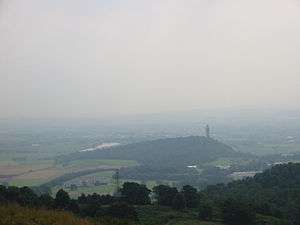Crag and tail


A crag (sometimes spelled cragg, or in Scotland craig) is a rocky hill or mountain, generally isolated from other high ground. Crags are formed when a glacier or ice sheet passes over an area that contains a particularly resistant rock formation (often a granite, volcanic plug or some other volcanic structure). The force of the glacier erodes the surrounding softer material, leaving the rocky block protruding from the surrounding terrain. Frequently the crag serves as a partial shelter to softer material in the wake of the glacier, which remains as a gradual fan or ridge forming a tapered ramp (called the tail) up the leeward side of the crag.
In older examples, or those latterly surrounded by the sea, the tail is often missing, having been removed by post-glacial erosion.
Examples of such crag and tail formations include:
- The Castle Rock in Edinburgh, Scotland, the rock on which Edinburgh Castle stands
- Salisbury Crags and Arthur's Seat
- North Berwick Law
- Three in or near Stirling, including the rock on which Stirling Castle stands
- "Scrabo Hill" in Newtownards, Northern Ireland ( 'Scrabo Tower' stands on the erosion resistant Crag)
See also
References
- Holmes, Arthur, Principles of Physical Geology, Halsted, 1978, 3rd ed., pp 421 – 422 ISBN 0-471-07251-6